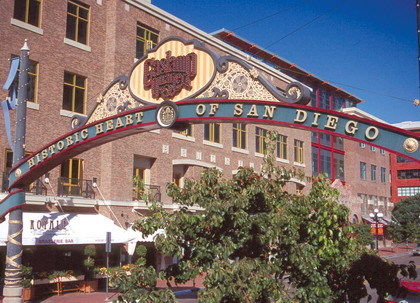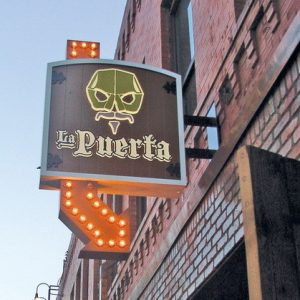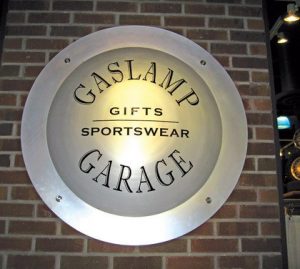In 1867, San Franciscan Alonzo Horton purchased approximately 800 acres of San Diego waterfront property. The area, which soon became known as the Gaslamp Quarter, quickly boomed as an entertainment destination – however, much of its “entertainment” in the area included bordellos until police raids chloroformed the enterprises in 1912. For decades, San Diego remained a laconic, easygoing city in comparison to Los Angeles 100 miles north, best known for its idyllic weather and significant military installations. Despite the Quarter’s stunning Victorian, Spanish Revival and Baroque architecture, which was primarily built between 1880 and 1910, the district remained largely vacant and run-down for decades.
In the mid-1970s, several entrepreneurs and restaurateurs realized the Gaslamp’s potential and began setting up shop. Today, according to Tricia Tellier, the Gaslamp Assn.’s director, approximately 175 restaurants and nightclubs and 100 retail shops have laid out their shingles in the 16.5-block district.
The Gaslamp Quarter maintains relatively strict sign requirements. Exposed neon isn’t permitted; the code only allows only incandescent bulbs and backlit signage, which she said better reflects vintage-style sign illumination. She said codes okay LED-lit signs if they’re installed within retro-themed signs.
“LEDs offer an energy-efficient lighting solution, and they aren’t susceptible to the vibration from a high-traffic area that can damage incandescent bulbs,” Tellier said. “Even the Gaslamp archway sign incorporates [incandescent] bulbs, but they probably aren’t the most practical solution for today. Retro-style signage should benefit from technological advances as well.”
Advertisement
The Gaslamp Garage, which sells surfing-related items and souvenirs, recently opened in the Quarter two blocks west of Petco Park, home of the Padres. Owner Nick Hoppe, who operates seven restaurants and stores throughout the Golden State, said he wanted to play up the garage theme and requested a hubcap-shaped sign.
He hired Vista, CA’s SIGN World franchise, which Tom Jackse owns, to fabricate the sign. Steve Flores, the shop’s fabricator and a signmaker for 16 years, subbed out production of the metal shell to Bruce Parrish, a neighboring metalworker, who dipped it in a clear, anodizing solution. Flores covered the “hubcap” with cut Avery Dennison Graphics & Reflective Products Div. A9 cast vinyl. He installed the sign on the brick wall with the prior sign’s fixture and overhead, gooseneck lamp. Flores also produced interior graphics with Oracal USA pressure-adhesive film (printed on a Roland DGA Corporation VersaCamm 54-in., eco-solvent printer) and adhered to PVC backing.
La Puerta, which earned the designation of the Quarter’s Mexican Restaurant of the Year for 2008 in its inaugural year of operation, features vertical, incandescent-lit channel letters with a running pattern that Tellier lauds as “representing the neighborhood’s character.” Joe Ebner, the restaurant’s owner, said the sign helps create ambience for his establishment.


 Tip Sheet1 week ago
Tip Sheet1 week ago
 Photo Gallery3 days ago
Photo Gallery3 days ago
 Ask Signs of the Times5 days ago
Ask Signs of the Times5 days ago
 Real Deal2 weeks ago
Real Deal2 weeks ago
 Benchmarks1 week ago
Benchmarks1 week ago
 Paula Fargo11 hours ago
Paula Fargo11 hours ago
 Photo Gallery12 hours ago
Photo Gallery12 hours ago
 Women in Signs2 weeks ago
Women in Signs2 weeks ago













